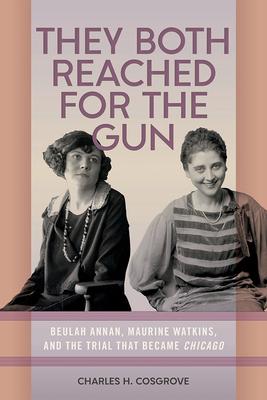Examining the case that inspired a pop culture phenomenon
In 1924 Beulah Annan was arrested for killing her lover, Harry Kalsted. Six weeks later, a jury acquitted her of murder. Inspired by the sordid event, trial, and acquittal, reporter Maurine Watkins wrote the play Chicago, a Broadway hit that was adapted several times. Through a fresh retelling of Annan's story and Watkins's play, Charles H. Cosgrove provides the first critical examination of the criminal case and an exploration of the era's social assumptions that made the play's message so plausible in its time. Cosgrove expertly combines inquest and police records, and interviews with Annan's relatives, to analyze the participants, the trial, and the play. Although no one will ever know what really happened in that Kenwood apartment, Cosgrove's interrogation shows how sensationalized Watkins's writing was. Her reporting on the Annan case perpetuated falsehoods about Annan's so-called "confession," and her play inaccurately portrayed Chicago's criminal justice system. Cosgrove challenges the portrait of Annan as a killer who got away with murder and of Watkins as a savvy reporter and precocious playwright. He exposes the weaknesses of the case against Annan and vindicates the jury that tried her.
Book
They Both Reached for the Gun: Beulah Annan, Maurine Watkins, and the Trial That Became Chicago
(Write a Review)
Paperback
$24.95
Examining the case that inspired a pop culture phenomenon
In 1924 Beulah Annan was arrested for killing her lover, Harry Kalsted. Six weeks later, a jury acquitted her of murder. Inspired by the sordid event, trial, and acquittal, reporter Maurine Watkins wrote the play Chicago, a Broadway hit that was adapted several times. Through a fresh retelling of Annan's story and Watkins's play, Charles H. Cosgrove provides the first critical examination of the criminal case and an exploration of the era's social assumptions that made the play's message so plausible in its time. Cosgrove expertly combines inquest and police records, and interviews with Annan's relatives, to analyze the participants, the trial, and the play. Although no one will ever know what really happened in that Kenwood apartment, Cosgrove's interrogation shows how sensationalized Watkins's writing was. Her reporting on the Annan case perpetuated falsehoods about Annan's so-called "confession," and her play inaccurately portrayed Chicago's criminal justice system. Cosgrove challenges the portrait of Annan as a killer who got away with murder and of Watkins as a savvy reporter and precocious playwright. He exposes the weaknesses of the case against Annan and vindicates the jury that tried her.Paperback
$24.95